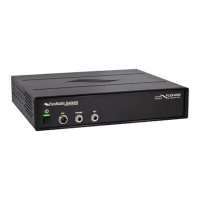FLEX-6000 Signature Series – FLEX-6000 Hardware Reference Manual
Page 37 of 48
Copyright 2016 FlexRadio Systems. All Rights Reserved.
If the event that you have a FLEX-6300 and split IF transverters, you can still use your transverters,
but you must supply a relay that effectively converts from a split IF to a common IF transverter.
The FLEX-6300 cannot directly support a Split IF transverter since it only has one transverter or
receive port.
10.1 TRANSMIT POWER CONSIDERATIONS
The default transverter output is 0 dBm. The FLEX-6000 can produce an output on the
XVTR port up to +8 dBm for IF frequencies above 135MHz (FLEX-6700) or up to +15dBm for
frequencies below 72MHz. If your transverter requires a higher level input that this, it is
recommended that you either modify the transverter for a lower power input or provide
an amplifier to amplify the transmit signal before passing to the transverter.
10.2 RF CONNECTIONS - COMMON IF
For a common IF configuration, the Common IF port of the transverter should be connected
to the XVTR port on your FLEX-6000. This will be the only RF connection between the
transverter and the radio.
10.3 RF CONNECTIONS - SPLIT IF
For split IF transverters, the TX IF of your transverter should be connected to the XVTR port
on the FLEX-6000. The RX IF port should be connected to either RX-A or RX-B (FLEX-6700).
As mentioned previously, the FLEX-6300 requires either a common IF transverter or a relay
that can be used to convert a split IF transverter to a common IF transverter.
While it is technically feasible to use the ANT1 or ANT2 ports for receive, this is not
recommended since these ports can produce high-power RF at any time that could damage
your transverter.

